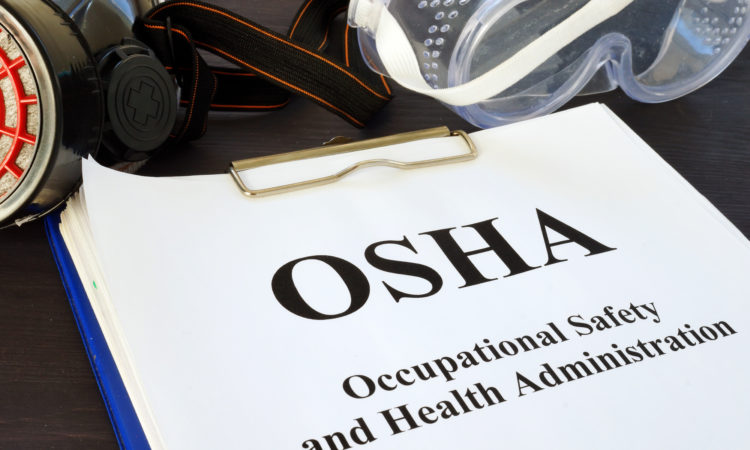OSHA publishes a set of recommended practices for safety and health programs to help employers establish a methodical approach to improving safety and health in their workplaces. OSHA’s Recommended Practices for Safety and Health Programs in Construction (Construction Practices) has been updated to account for changes since the document was first published – over 30 years ago – taking into consideration, greater technology and more diversity among workers. The focus of the Construction Practices is on finding and fixing hazards before they can cause injury…
Continue reading...
Resource
On October 11, 2018, OSHA issued a Memorandum (the Memorandum) ostensibly clarifying its position on post-accident drug testing and employee incentive programs. Any fair reading of the Memorandum, however, shows that OSHA is actually doing a lot more than simply “clarifying” its position – in some respects, it is completely reversing course. This is especially true with respect to safety incentive programs. And employers should take note.
Safety Incentive Plans
OSHA’s “old” position on safety incentive plans – since at least 2016, and actually well…
Continue reading...
Continue reading...
OSHA requires that employers “instruct each employee in the recognition and avoidance of unsafe conditions” and the regulations applicable to the workplace “to control or eliminate any hazards or other exposure to illness or injury.” This broad directive underscores the necessity of conducting a hazard assessment—determining the hazards present in the work environment. Indeed, one of the “root causes” of workplace incidents is the failure to identify or recognize hazards that are present, or that could have been anticipated.
Take, for example, electrical hazards. Many…
Continue reading...
Continue reading...
OSHA will be the first to admit that its safety standards set forth “minimum” safety standards. In the most basic of terms, this means that when it comes to safety more can — and often should (or even must) — be done. This begs the question: What “more” can be done? Ask 10 different safety professionals and you may get 10 different answers—all of which could be right. The general consensus, however, is that a comprehensive health and safety system is needed—complete with management commitment,…
Continue reading...
Continue reading...
OSHA penalties can be costly. In fact, a single “repeat” or “willful” violation can result in a penalty of $126,749. And, if you have multiple violations, that number can increase significantly. This article addresses measures any employer can implement to minimize the risk of costly penalties while—at the same time—promote the most important goal which is to provide a safe work environment for employees.
Perform a Self-Assessment
The first step is to take an in-depth look at your organization and assess how you are doing…
Continue reading...
The first step is to take an in-depth look at your organization and assess how you are doing…
Continue reading...
Section 8(a) of the Occupational Safety and Health (OSH) Act of 1970 authorizes OSHA to inspect workplaces “during regular working hours and at other reasonable times, and within reasonable limits and in a reasonable manner.” While employers have some level of protection since the mandate specifically states the word “reasonable,” more specific rights exist—and should be exercised—at all stages of an OSHA inspection, including before, during, and after the interview process.
Basic Interview Rights
During an OSHA inspection, one or more of your employees is…
Continue reading...
Continue reading...
On March 1, 2017, the U.S. House of Representatives passed a resolution of disapproval, under the Congressional Review Act, to block OSHA’s “Volks” rule. On March 22, 2017, the Senate followed suit and voted to overturn the rule. Now, the resolution will be forwarded to President Trump to sign, which is expected to occur.
The Volks rule—formally the “Clarification of Employer’s Continuing Obligation to Make and Maintain an Accurate Record of Each Recordable Injury and Illness” rule—was issued on December 19, 2016, during the final…
Continue reading...
Continue reading...
OSHA’s Strategic Partnership Program (OSPP) for Worker Safety and Health is a federal initiative that seeks to reduce occupational fatalities, injuries, and illnesses as well as improve worker protections by engaging labor organizations, employer groups, individual employers and others in formal, cooperative relationships with OSHA to carry out the purposes of the Occupational Safety and Health Act.
The OSPP was first created in 1998 and it seeks to have a measurable, positive impact on the workplace by helping participants establish effective safety and health management…
Continue reading...
Continue reading...
Shortly after issuing a citation to an employer, OSHA will often agree to reduce the penalty amount provided the employer agrees not to contest it. But could settling invite further trouble? For a number of reasons, contractors should give considerable thought before entering into an early settlement with OSHA.
You Need to Move Quickly
Upon receipt of a citation, you have three basic options: accept the citation as-issued (this is almost never the best option); request an informal conference and attempt to settle or convince…
Continue reading...
Continue reading...
In most instances, an OSHA inspector will arrive at your door unannounced. Among other things, the inspector will present his or her credentials, say why he or she is there, and then ask for your consent to conduct an inspection. The actual inspection and a closing conference will follow, along with the issuance of any citations within six months of any violations.
UNPREVENTABLE EMPLOYEE MISCONDUCT DEFENSE
Although many procedural and legal defenses may exist to an OSHA citation, one of the most popular and effective…
Continue reading...
Continue reading...





